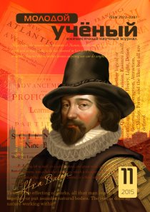A happy marriage is a long conversation which always seems too short
Andre Maurois
Nowadays, many Russian wedding traditions are irretrievably lost. Several hundred years ago, a wedding was a complex of ceremonies performed in a strict sequence of a particular tradition scenario. The most important ceremonies of marriage in Russia were:
- proposal of marriage;
- bride-show;
- engagement;
- bridal shower;
- ransom of the bride;
- wedding ceremony;
- wedding night;
- nuptial feast.
Each of them had a certain meaning. Proposal of marriage, for example, was between the two families about the possibility of marriage between a young man and a woman. Then the bride’s parents went to the groom’s house and carefully examined the household. If they were satisfied, they accepted the invitation to stay for a festive meal. Bride-show was also very important. The groom’s parents met with the girl to learn what skills she had, how beautiful she was, what dowry she had, etc.
Engagement was a symbolic decision on fixing the wedding. Parents and relatives from both sides were invited to the engagement. There were negotiations about the day of the wedding, the dowry and the number of guests at the wedding feast.
At the bridal shower, the bride said goodbye to girlhood. This ceremony was held in the bride’s home and all her (female) friends were invited. The farewell of the bride to her girlhood usually began immediately after the engagement and continued until the wedding.
In the morning, on the day of the wedding, the groom passed the bride a jewelry box (bridegroom’s jewelry box) through his intermediary. A matchmaker or groom’s aunt then passed it to the bride. Usually the jewelry box contained the bridal veil, wedding candles, wedding ring, a set of combs (beak clips, hair clips, etc.), perfume, etc. Apart from the wedding accessories, sweets for the bride could also be put into the box.
Ransom of the bride is one of the funniest and most entertaining elements of the wedding ceremony. The problem of “ransom” is usually resolved between the best man and the bridesmaids. The bride is usually “ransomed” for money, candies, flowers and champagne. It all depends on the imagination of the bridesmaids.
A common Russian tradition to welcome guests with bread and salt came into wedding ceremonies. A young husband and wife were met as they were departing from the wedding ceremony with the wedding bread and salt (xleb i sol); and were blessed with the family icon. The newly-weds bit off from the wedding bread sprinkled with salt to have solidarity, advice and love in the family. When they entered the house, they were sprinkled with grain and hops to wish the family a prosperous life together.
To make the marriage successful, going to the altar, the bride should wear something old, something new, something blue and something borrowed. As a rule, an old family jewel was meant to be “something old”. Such a thing symbolized peace and wisdom in marriage. “Something new” represented good luck and success in the bride’s new life. “Something borrowed” needed to be accepted from a married woman who was happy in marriage. This thing passed blessing for a good family life. “Something blue” meant love, modesty and fidelity.
No one probably will remember where the wedding custom “Now a Kiss!” came from. Earlier the bride went around to the guests with a tray. Each guest in turn put money on it, took a stopka, drank and said, “Gorko”, confirming that he drank vodka and not water. Then he kissed the bride. Those who did not give money, just drank with the words “Gorko!"” and watched the kisses of other guests. Gradually the custom was replaced by the playful requirement of new kisses from the newlyweds.
Wedding bouquet is a part of a wedding though it does not belong to the Russian tradition. The bride should throw the bridal bouquet to the unmarried girlfriends, and the one who caught it would be the next one to get married.
It is difficult to say when garter tossing appeared, probably it came from France. The tradition of tossing the garter was popular in parts of Europe, as people sincerely believed that an article of clothing of the bride or groom would bring good luck and love to their home. As a rule, the garter is worn above the knee of the right leg. At the end of the wedding ceremony, the groom removes the garter then tosses it towards the unmarried friends. The person who catches the wedding garter is supposed to be the next person to be married.
An important role at the wedding was given to the best man. His duties included the monitoring of the compliance with Russian wedding traditions, entertainment of the guests and protection of the wedding participants from evil forces.
On the second day of the wedding in the Russian villages people began to beat clay pots. It was believed that the more fragments the pot had, the more happiness would be in the family. Nowadays the tradition is a little transformed. Broken dishes not only promise happiness to newlyweds, but also show how good a young wife is, as she must quickly and carefully sweep all fragments of the broken dishes despite all the obstacles made by the guests.
All in all, the wedding may be arranged in line with traditions or individual ideas. The wedding is a happy day for each couple and it is their job to create it the best way to suit their wishes and make it memorable.







